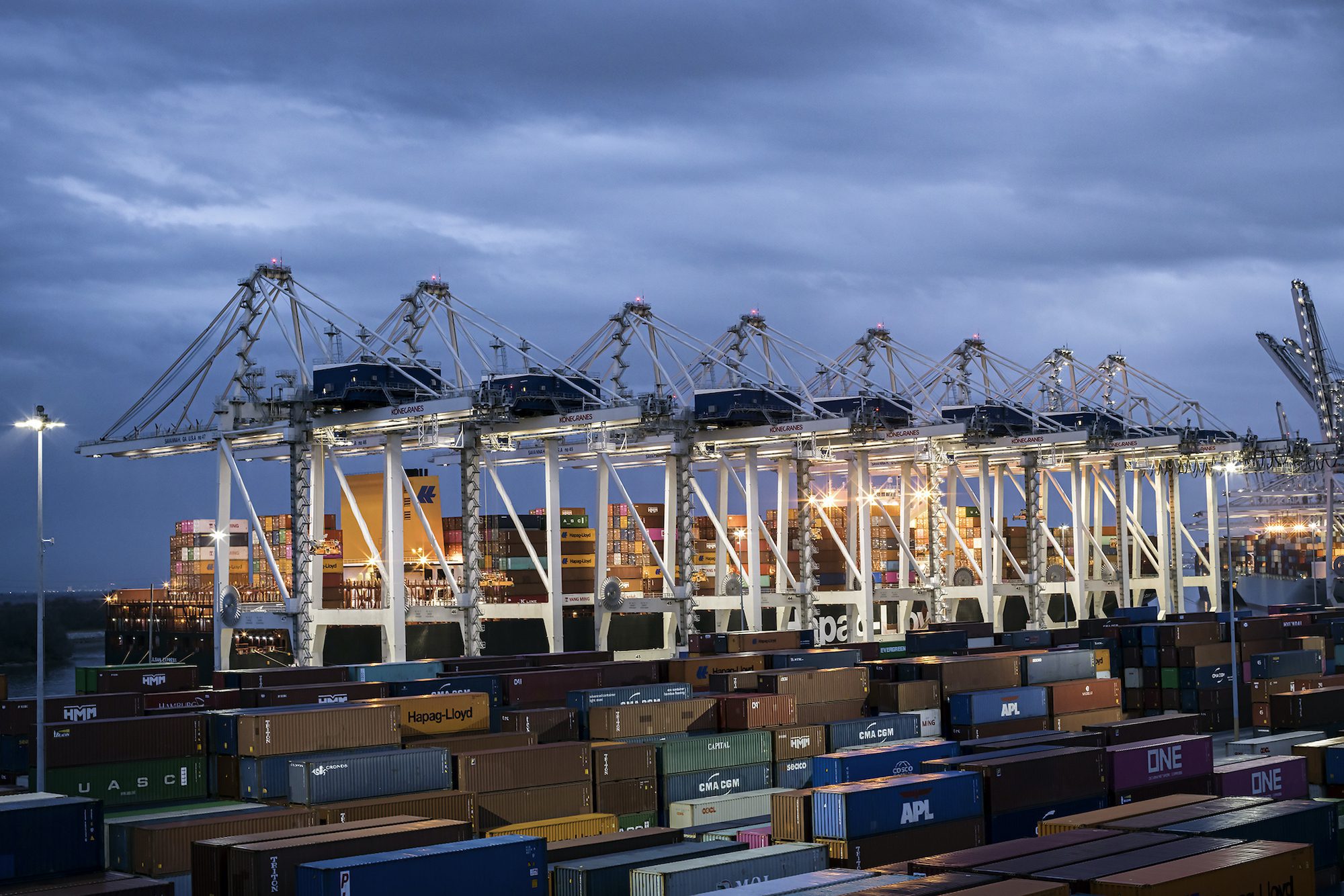U.S. Customs Revenue Tops $100 Billion for First Time Amid Tariff Surge
US revenue from customs duties this fiscal year surpassed $100 billion for the first time, reflecting higher tariffs imposed by the Trump administration.

The queues of anchored vessels on the West Coast are shrinking- now with a “60” or “70” handle, down from the print of over 100 vessels at end 2021.
Noted names like and Maersk and Sea-Intelligence (closely tied to the Maersk organization) have hinted that “things will get back to normal” later in the year, with the latter suggesting that overall “reliability “(think about adherence to schedules) is presently down to low levels, circa 30%, not seen in more than a decade.
The cargo has been shifting; not surprisingly, cargo interests are paying more on the ocean freight component (though less on the land portion of moves), and routing more U.S. bound cargo inbound to East Coast ports over the past nine months—since mid-2021.
John McCown, an industry veteran with decades in liner shipping (his mentor was Malcom McLean, the inventor of containerization), provides excellent insights into these flows with his monthly McCown Container Volume Observer. In his mid-March edition, he talks about a 15.6% inbound cargo gain in February, 2022 (month on month, compared to the previous year) for the ten largest U.S. ports—buoyed by moves into East Coast ports.
According to his analysis, big winners from the shift have been Charleston, Houston and Norfolk, all showing imports (measured in the TEU’s) up over 30%. While West Coast ports have pointed to “record volumes”, their inbound throughputs were up by single digits in relative terms; Los Angeles (still the leader for inbound TEUs, in absolute terms) was up 2.7%.
In examining the February figures, he comments that: “February was ninth straight month in which year over year percent change in volume at East/Gulf Coast ports outperformed West Coast ports.” Shippers have made the shifts, in part, because they have had enough with the widely reported congestion on the West Coast.
But other factors are at play, underlying the statistics. John McCown suggests that “The first thing to note is that February benefited from the Lunar New Year in China which began 11 days earlier this year (Feb 1 versus Feb 12 in 2021). The start of celebrations that have most factories shut for at least two weeks and the shipment activity related to it had last February being the weakest inbound month.” He suggests that, this year, March inbound figures will be disappointing.
While the reduced queues at West Coast ports are heartening, long-time supply chain observers caution that February and early March slowdowns at Chinese ports (blame the aforementioned Chinese New Year, and, in recent weeks, the Covid-related lockdowns) may cause a bump upward in vessel arrivals during April.
Given the complexity of supply chains, it is unclear whether the vessels will back up again as the land side struggles to handle the cargo flows. We will need to look closely at the McCown report in May to pick up these impacts.
Looming farther out in the future, the present contract between the West Coast dockworkers and the ports expires June 30, 2022, with some analysts suggesting that cargo shippers will be willing to pay an “uncertainty premium” in the form of the increased costs of moving cargo to the East Coast.

Sign up for gCaptain’s newsletter and never miss an update

Subscribe to gCaptain Daily and stay informed with the latest global maritime and offshore news


Stay informed with the latest maritime and offshore news, delivered daily straight to your inbox
Essential news coupled with the finest maritime content sourced from across the globe.
Sign Up